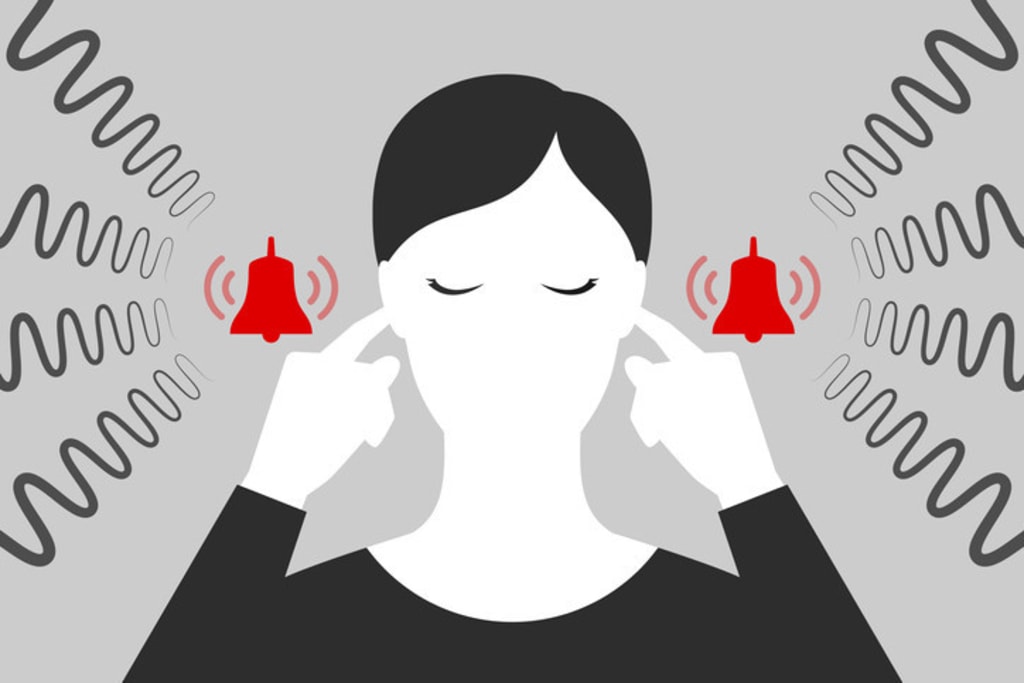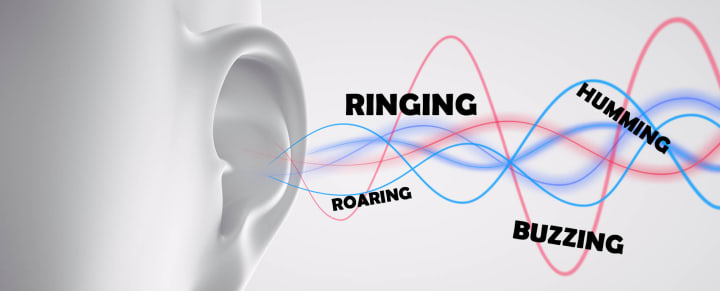Tinnitus masking techniques: What they are and how they work | What is tinnitus Maskers ?
Click here to learn more

Tinnitus is a condition where a person experiences ringing or other noises in their ears that have no external source. While tinnitus is usually not a sign of a serious underlying condition, it can be very distressing and can have a significant impact on a person's quality of life. There are many ways to manage tinnitus, and one of the most effective is through masking techniques.
Masking techniques involve using external sounds to help reduce the perception of tinnitus. By introducing other sounds into the environment, masking can help to distract a person from their tinnitus and reduce the intensity of the ringing or other noises. In this article, we'll explore the various masking techniques that can be used to manage tinnitus, as well as how they work and the benefits they offer.
1. White Noise
One of the most popular masking techniques is the use of white noise. White noise is a type of sound that contains all of the frequencies that the human ear can hear, played at equal intensities. The result is a sound that is uniform and static, which can help to mask the sound of tinnitus.
White noise can be generated using a variety of different devices, including sound machines, fans, and air purifiers. Many people find that simply turning on a fan or air conditioner can provide enough white noise to help reduce the perception of their tinnitus.
2. Pink Noise
Similar to white noise, pink noise is a type of sound that can be used to mask tinnitus. However, while white noise contains all of the frequencies that the human ear can hear, pink noise is characterized by a greater emphasis on low-frequency sounds.
Pink noise can be created using a variety of different devices, including sound machines, smartphone apps, and streaming services. Some people find that pink noise is more effective than white noise at masking their tinnitus, as it provides a deeper, more soothing sound.
3. Brown Noise
Another type of noise that can be used to mask tinnitus is brown noise. Like pink noise, brown noise is characterized by a greater emphasis on low-frequency sounds. However, unlike pink noise, brown noise is even deeper and more soothing.
Brown noise can be generated using a variety of different devices, including sound machines and smartphone apps. Many people find that brown noise is particularly effective at masking their tinnitus when they're trying to sleep, as it provides a deeper, more relaxing sound.
4. Notched Sound Therapy
Notched sound therapy is a type of sound therapy that involves exposing a person to sounds that have been modified to remove the frequencies that match their tinnitus. By doing so, notched sound therapy can help to reduce the perception of tinnitus and improve a person's quality of life.
Notched sound therapy can be delivered using a variety of different devices, including headphones and speakers. Many people find that notched sound therapy is particularly effective when used in conjunction with other tinnitus management techniques, such as cognitive-behavioral therapy and relaxation techniques.
5. Music
Music is another effective way to mask tinnitus. By listening to music, a person can distract themselves from the ringing or other noises they're experiencing and focus on something else. Additionally, the rhythms and melodies in music can help to stimulate the brain and reduce the perception of tinnitus.
When using music to mask tinnitus, it's important to choose songs or genres that are calming and soothing. Many people find that instrumental music, such as classical or ambient music, is particularly effective at reducing the perception of their tinnitus.
6. Nature Sounds
Finally, nature sounds can be an effective way to mask tinnitus. By listening to the sounds of nature, such as waves crashing or birds singing, a person can distract themselves from their tinnitus and focus on something else. Additionally, nature sounds can be very calming
7. Neuromodulation Techniques
Neuromodulation techniques aim to alter the activity of the auditory system to reduce the perception of tinnitus. These techniques include:
Transcranial Magnetic Stimulation (TMS): TMS is a non-invasive method of brain stimulation that uses magnetic fields to stimulate nerve cells in the brain. It has been shown to be effective in reducing the loudness and distress of tinnitus. TMS works by stimulating the brain regions responsible for processing sound, which can reduce the overactivity that causes tinnitus. TMS is usually performed in a clinic or hospital setting by a trained professional.
Transcutaneous Vagus Nerve Stimulation (tVNS): tVNS involves the stimulation of the vagus nerve, a large nerve that connects the brain to many parts of the body, including the ears. It has been shown to be effective in reducing the symptoms of tinnitus by reducing the overactivity in the auditory system. tVNS is usually performed using a small device that delivers electrical stimulation to the ear or neck.
Deep Brain Stimulation (DBS): DBS involves the surgical implantation of electrodes in the brain. It has been shown to be effective in reducing the symptoms of tinnitus in some people. DBS works by altering the activity of the brain regions responsible for processing sound, which can reduce the overactivity that causes tinnitus. DBS is a relatively new treatment for tinnitus, and is only available in a limited number of clinics and hospitals.
Repetitive Transcranial Magnetic Stimulation (rTMS): rTMS is similar to TMS, but involves the repeated application of magnetic fields to the brain over a period of time. It has been shown to be effective in reducing the symptoms of tinnitus in some people. rTMS works by altering the activity of the brain regions responsible for processing sound, which can reduce the overactivity that causes tinnitus. rTMS is usually performed in a clinic or hospital setting by a trained professional.
8. Cognitive Behavioral Therapy (CBT)
CBT is a type of therapy that helps people change the way they think and behave in response to tinnitus. CBT for tinnitus typically involves:
Education about tinnitus and how it affects the brain and body.
Identifying negative thoughts and behaviors related to tinnitus.
Learning techniques to replace negative thoughts and behaviors with more positive ones.
Learning relaxation and stress management techniques.
CBT has been shown to be effective in reducing the distress caused by tinnitus, even when the loudness of the tinnitus does not change.
9. Mindfulness-Based Stress Reduction (MBSR)
MBSR is a type of meditation-based therapy that helps people manage stress and anxiety. It has been shown to be effective in reducing the distress caused by tinnitus. MBSR involves:
Learning mindfulness meditation techniques.
Practicing meditation and other mindfulness techniques daily.
Learning to be more aware of thoughts and emotions related to tinnitus.
Learning techniques to manage stress and anxiety related to tinnitus.
MBSR is usually taught in a group setting by a trained professional, although it can also be learned online.

Conclusion
Tinnitus is a common condition that affects millions of people around the world. While there is no cure for tinnitus, there are many treatments available that can help reduce the symptoms and improve quality of life. These treatments range from simple lifestyle changes, such as avoiding loud noises and managing stress, to more advanced therapies, such as neuromodulation techniques and cognitive behavioral therapy.
If you are struggling with tinnitus, it is important to seek help from a healthcare professional. They can help you identify the underlying causes of your tinnitus and develop a treatment plan that is tailored to your needs.
So lets's get this sorted out!
Say goodbye to tinnitus and hello to peace of mind! Try our 100% natural blend support today and start experiencing the relief you deserve. Don't let tinnitus control your life any longer - take action now and discover the power of nature."
Click Here to Try our 100% natural blend support today

Affiliate Disclosure:
There are links on this site that can be defined as affiliate links. This means that I may receive a small commission. If you purchase something through links provided on this website.
About the Creator
Your GUIDE
Say goodbye to tinnitus and hello to peace of mind! Try our 100% natural blend support today and start experiencing the relief you deserve. Don't let tinnitus control your life any longer - take action now and discover the power of nature
Enjoyed the story? Support the Creator.
Subscribe for free to receive all their stories in your feed. You could also pledge your support or give them a one-off tip, letting them know you appreciate their work.






Comments
There are no comments for this story
Be the first to respond and start the conversation.